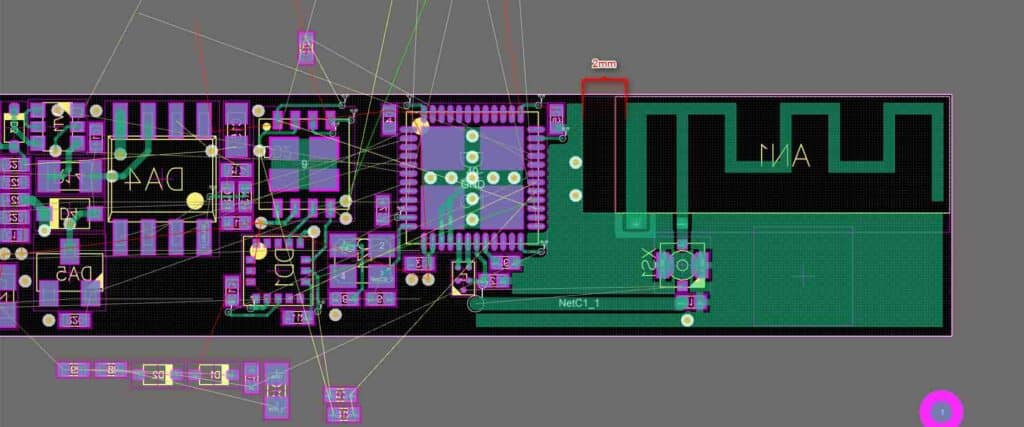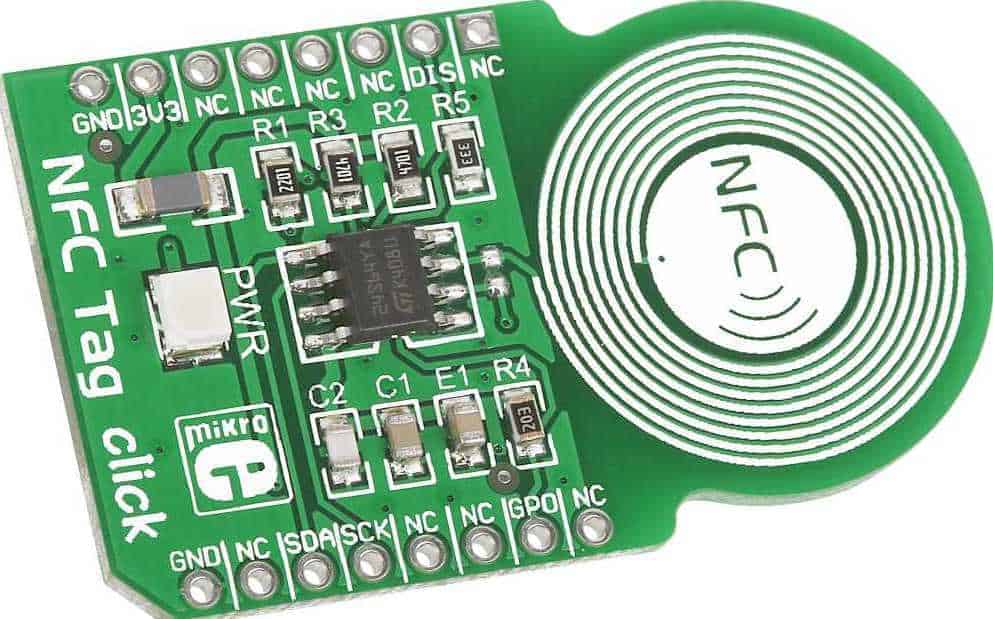PCB monopole antennas are a type of antenna that is widely used in wireless communication devices. They are known for their compact size, low profile, and ease of integration into circuit boards. PCB monopole antennas are typically used in applications where space is limited, such as in mobile phones, laptops, and other portable devices.
The basic structure of a PCB monopole antenna consists of a metal strip that is printed on a circuit board. The length of the metal strip is typically one-quarter of the wavelength of the signal that the antenna is designed to transmit or receive. The metal strip is connected to the circuit board through a feed point, which is typically located at the end of the strip. The feed point is where the signal is input or output from the antenna.

Overview
A PCB monopole antenna is a type of antenna that is used in wireless communication devices such as smartphones, tablets, and laptops. It is a type of antenna that is designed to be mounted on a printed circuit board (PCB) and is used to transmit and receive signals wirelessly.
One of the key advantages of a PCB monopole antenna is its compact size. It is designed to be small and lightweight, making it ideal for use in portable devices. Additionally, it is relatively easy to integrate into a PCB, which makes it a popular choice for manufacturers.
Another advantage of a PCB monopole antenna is its omnidirectional radiation pattern. This means that it can transmit and receive signals in all directions, which makes it ideal for use in environments where the direction of the signal is not known in advance.
The performance of a PCB monopole antenna is affected by a number of factors, including the size and shape of the antenna, the materials used in its construction, and the environment in which it is used. As a result, careful design and testing are required to ensure that the antenna meets the performance requirements of the device in which it is used.
In summary, the PCB monopole antenna is a popular choice for wireless communication devices due to its compact size, omnidirectional radiation pattern, and ease of integration into a PCB. Its performance is affected by various factors, which must be carefully considered during the design and testing process.
Design Considerations
When designing a PCB monopole antenna, there are several key considerations that must be taken into account to ensure optimal performance. These considerations include the frequency range, size and shape, and the ground plane.
Frequency Range
One of the most important design considerations for a PCB monopole antenna is the frequency range it will be operating in. The antenna must be designed to resonate at the desired frequency range, and this can be achieved by adjusting the length of the antenna. A longer antenna will resonate at a lower frequency, while a shorter antenna will resonate at a higher frequency.
Size and Shape
The size and shape of the PCB monopole antenna can also have a significant impact on its performance. The antenna must be designed to fit within the available space on the PCB, while also providing the necessary radiation pattern and gain. The shape of the antenna can also affect its performance, with certain shapes being more effective for certain applications.
Ground Plane
The ground plane is another important consideration when designing a PCB monopole antenna. The antenna must be designed to work with the ground plane, which can affect the radiation pattern and gain of the antenna. The ground plane should be as large as possible to provide a good reference for the antenna, and it should be placed as close to the antenna as possible.
In summary, when designing a PCB monopole antenna, it is important to consider the frequency range, size and shape, and ground plane. By carefully considering these factors, it is possible to design an antenna that provides optimal performance for the desired application.
Performance Evaluation

The performance of a PCB monopole antenna can be evaluated based on several parameters such as radiation pattern, gain, impedance matching, and efficiency.
The radiation pattern of the antenna determines the direction and strength of the electromagnetic waves that are radiated. A well-designed monopole antenna should have a radiation pattern that is omnidirectional in the horizontal plane and has a maximum gain in the vertical direction.
The gain of the antenna measures the ability of the antenna to radiate energy in a particular direction compared to an isotropic radiator. The gain of a PCB monopole antenna can be increased by increasing the length of the antenna, but this may also increase the size of the antenna.
Impedance matching is an important parameter that determines the efficiency of the antenna. The impedance of the antenna should be matched to the impedance of the transmission line to minimize the reflection of energy back to the source.
The efficiency of the antenna is the ratio of the radiated power to the total power supplied to the antenna. A well-designed PCB monopole antenna should have a high efficiency, which can be achieved by optimizing the dimensions of the antenna and the impedance matching.
Overall, the performance of a PCB monopole antenna can be evaluated based on these parameters, and a well-designed antenna should have a radiation pattern that is omnidirectional in the horizontal plane, a maximum gain in the vertical direction, good impedance matching, and high efficiency.
Applications

PCB monopole antennas are used in a variety of applications due to their compact size and ease of integration into electronic devices. Here are some of the common applications of PCB monopole antennas:
-
Wireless Communication Systems: PCB monopole antennas are widely used in wireless communication systems such as Wi-Fi, Bluetooth, Zigbee, and cellular networks. These antennas provide reliable and high-performance wireless connectivity in devices such as smartphones, tablets, laptops, and IoT devices.
-
RFID Systems: PCB monopole antennas are also used in RFID systems for tracking and identification purposes. These antennas are used in applications such as inventory management, asset tracking, and access control systems.
-
Automotive Applications: PCB monopole antennas are used in automotive applications such as keyless entry systems, tire pressure monitoring systems, and GPS antennas. These antennas provide reliable and high-performance wireless connectivity in harsh environments.
-
Medical Devices: PCB monopole antennas are also used in medical devices such as wireless monitoring systems, implantable devices, and diagnostic equipment. These antennas provide reliable and high-performance wireless connectivity in medical devices, which is critical for patient safety and health.
In conclusion, PCB monopole antennas are widely used in various applications due to their compact size, ease of integration, and high-performance wireless connectivity.

